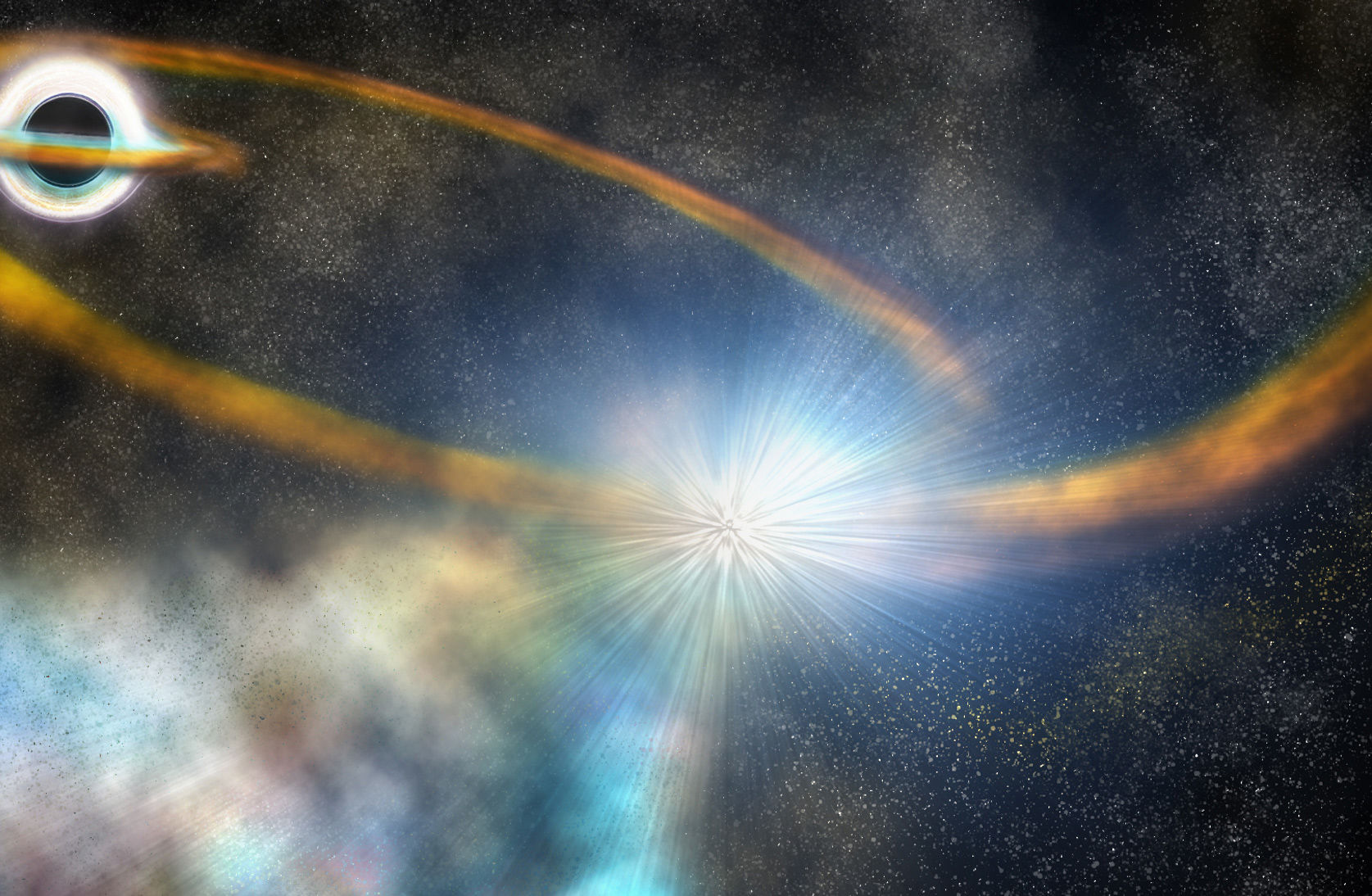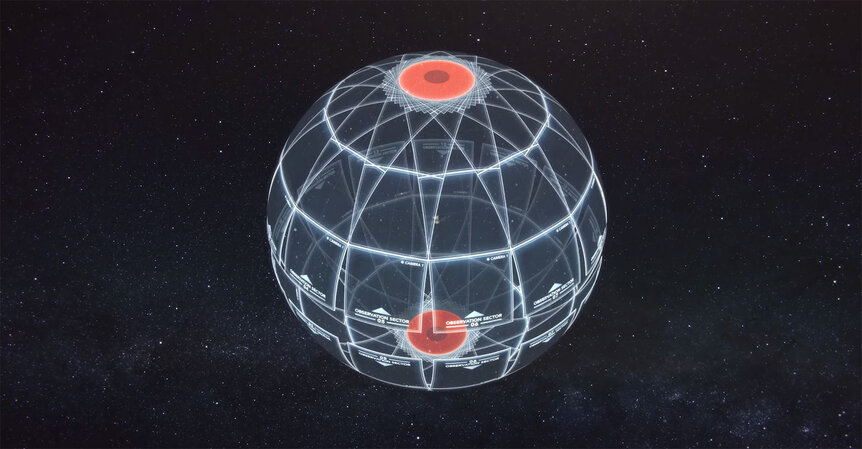Create a free profile to get unlimited access to exclusive videos, sweepstakes, and more!
Exoplanet-hunting observatory TESS sees a star torn apart by a black hole

TESS, the Transiting Exoplanet Survey Satellite, is an orbiting observatory designed to look for planets orbiting other stars.
In January 2019, it saw something a wee bit different: It saw the earliest stages of a black hole tearing a star apart.
Weirdly, TESS saw this event before any other observatory, but it wasn’t where we got the initial discovery. That fell to another project: the All-Sky Automated Survey for Supernovae, or ASAS-SN for short… pronounced just how you think it’s pronounced.
ASAS-SN scans the sky looking for objects that suddenly get brighter. Astronomers refer to these by the generic term transients, but in particular ASAS-SN is geared to look for exploding stars, supernovae. In the meantime, though, it sees lots of other things as well.
On Jan. 29, 2019, ASAS-SN spotted something brightening in the constellation of Volans. It’s an automated observatory, so it sent out an alert. A lot of other observatories jumped on this, especially since it appeared to occur in the center of a galaxy — lots of interesting things happen there, so it was best to get right on this. The galaxy, called 2MASX J07001137−6602251, is about 375 million light years from Earth, so it’s pretty far.
Right away they knew it was unlikely to be a typical supernova. Spectra didn’t match ones you’d expect from the usual kind of exploding star… but they were consistent with one getting eaten by a black hole.
This part is clever: ASAS-SN surveys a lot of the sky, but it gives extra attention to places TESS looks too. TESS is observing the whole sky over the course of two years, and it does so by looking at different sectors, huge strips across the sky, one by one. These sectors all overlap at the poles of TESS’s orbit, which means that near these poles, objects get observed all the time, no matter what sector TESS happens to be observing, These parts of the sky are called continuous viewing zones.
The event, called ASASSN-19bt, happened to be in one of TESS’s continuous zones. That means that although it was discovered on Jan. 29 by ASAS-SN, TESS was already looking in that direction even before the event was discovered! That’s incredibly useful, because it means this event was caught as it was getting brighter, which is very rare when it comes to things like supernovae. Since they happen in random parts of the sky, unless you observe huge chunks of the sky every night, it’s hard to catch them during this brief period.
Sure enough, TESS first saw the light from this event on Jan. 21, over a week before it was officially discovered. The reason no one knew right away is that TESS only transmits its data to Earth every two weeks, so no one knew about it at the time. Still, the data has proven very useful in understanding what happened.
So, what happened?
Well, a black hole ate a star. (!!!) From the data, it looks like it was a supermassive black hole, about six million times the Sun’s mass, sitting in the center of that distant galaxy. A star got too close, and the gravity from the black hole ripped it apart.
This part cracks me up: These are called tidal disruption events, or TDEs, perhaps the most prosaic and mundane name for one of the Universe’s most violent and catastrophic events.
Tides are what astronomers call the effect of gravity changing with distance. As you move away from a massive object the gravity you feel from it gets weaker. A black hole has ferocious gravity. A star is a big object, and so if it happens to have a particularly unfortunate trajectory that takes it close to a black hole, the side of the star closer to the black hole feels a far stronger force of gravity than the side of the star facing away from the black hole. The overall effect is a stretching, literally pulling the star apart like taffy.
In the case of a black hole and a star, the star is actually ripped to shreds. When this happens, the forces inside the star cause it to erupt, explode, and release huge amounts of energy. At the same time, a long tail of stellar material is thrown away from the black hole, and a large portion of the star’s mass falls into a disk around it that can glow hot for a long time.
In this case, the star’s agonizing death scream blew out 32 billion times as much energy as the Sun emits. That’s as much energy as whole galaxies emit! In the lead-up to peak brightness, which took about 40 days, it emitted a total amount of energy equal to what the Sun puts out in two and a half billion years.
YE. GADS.
No wonder this could be seen hundreds of millions of light years away. It’s a singularly terrifying event.
A few dozen such TDEs have been seen now — they only happen every tens or hundreds of millennia in any given galaxy, so they’re rare — and we’re starting to understand the specific physics of them better: how the black hole pulls them apart, the processes that go on to cause it to erupt, and what the light looks like as it blasts away from the star. However, there are still surprises; in this one the brightness spiked by about 60% and then faded a bit around a month before the overall peak. It’s not clear what this means, and it’s never been seen in a TDE before. It may be typical, whatever it is, and it’s just never been seen before because no TDE has been spotted this early before.
That’s the power of these surveys! If we have to wait until something gets obvious, we’ll miss lots of interesting stuff, but with so many eyes on the sky, looking all over the sky, and looking deep (that is, to fainter objects), we’re bound to spot a whole bevy of fun things we didn’t even know existed before.
Mind you, we didn’t know exoplanets even existed before 1992, and now we know of thousands. That’s the main reason TESS was built, to look at brighter nearby stars and help us understand our neighborhood of planetary systems. But like so many things in science, it can be used for so much more than even its amazing prime mission.
And we’ll be seeing much, much more. More survey telescopes are coming online soon, and the amount of data they’ll produce is vast. What other mysteries, things we haven’t even suspected, are happening over our heads right now that we’re about to discover?




























